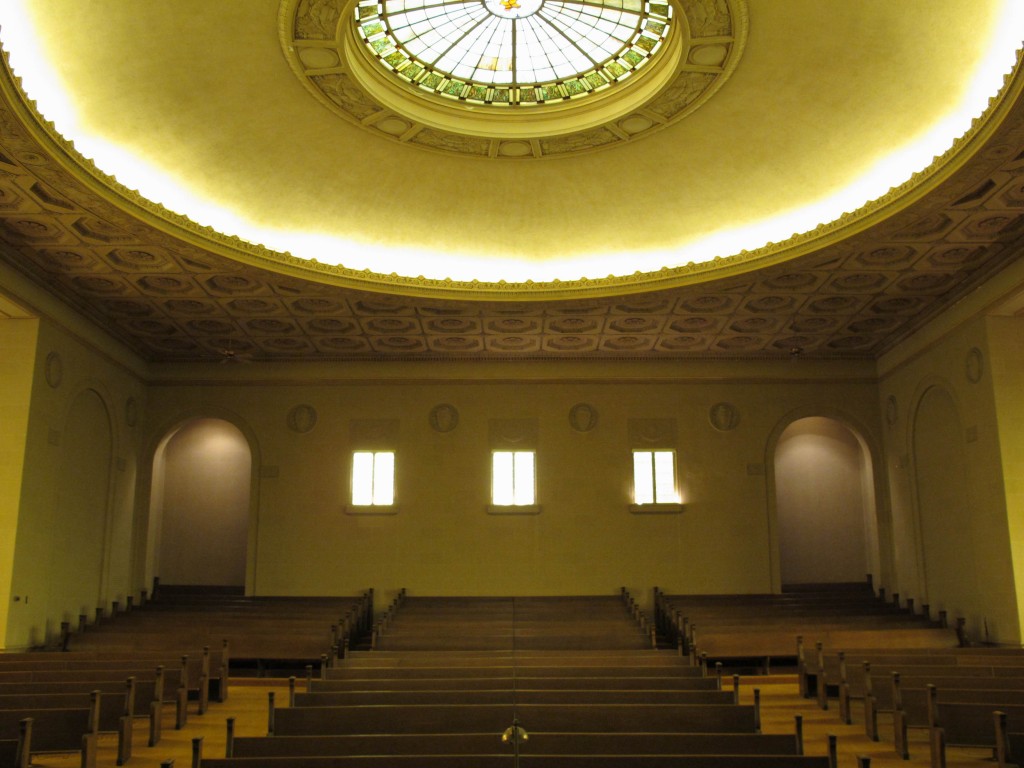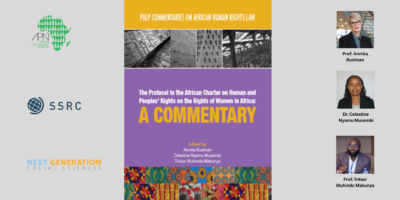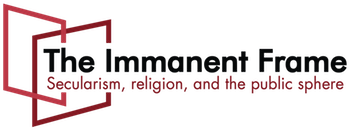 In the digital age, is anything a secret? What comprises the unknown when a search engine is at hand? These questions have technical answers; they also have existential replies. Perhaps there is no greater artifact of what hides in this information age than the office workplace.
In the digital age, is anything a secret? What comprises the unknown when a search engine is at hand? These questions have technical answers; they also have existential replies. Perhaps there is no greater artifact of what hides in this information age than the office workplace.
In 1975 BusinessWeek predicted a future we now occupy. “In almost a matter of months,” the article began, “office automation has emerged as a full-blown systems approach that will revolutionize how offices work.” It includes a quotation from George E. Pake, who then headed Xerox Corporation’s Palo Alto Research Center. “There is absolutely no question that there will be a revolution in the office over the next twenty years. What we are doing will change the office like the jet plane revolutionized travel and the way that TV has altered family life.”
In the forty years since that article appeared, nearly every one of its prophecies has been fulfilled. The article predicted that at every desk there would be a display terminal screen with keyboard; that documents would be called up from files on that screen; that mail would come via that screen; that these screens would be integrated into a whole system via a network of data sharing, communication, and security; that word processing would be eclipsed by data processing as the central labor of the office; that office overhead would increase in direct proportion to increased automation; that the service sector would grow, as would the price of skilled technological labor. BusinessWeek reported all of this as breathlessly inevitable, and quite frightening. “It will change our daily life,” Pake said. “And this could be kind of scary.”1“The Office of the Future.” Bloomberg Businessweek (30 June 1975), 48.
Pake left unclear what, exactly, will be scary. Will it be scary because we will have so much more information, so much more access, and so much more choice? Or will it be scary because we will be so easily watched, so intensely interconnected, and so vulnerable to the machine?
No matter the fear, it is absolutely clear that what was promised has transpired. We live in the world posited then, one of automation and integration, one of expanded bureaucratic force and diminishing labor power. It has become old-hat to liken this digitizing revolution to that of Johannes Gutenberg’s invention; it has become old-hat because it is true. Once there was a printing press that transformed the possibility of what people could have, could share, and could see; now there is a computer processor, which likewise remade our point of access, and utterly transfigured how it was to know. For 500 years we lived in a realm of paper; now we live in a world where its presence is prompted by a question mark: Do we need this, truly, in hard copy?
If you want to find people who speak of this transformation with glorious optimism, you can easily do so; if you want to find people who speak of this transformation only with profound despair, you can also quickly find that. For historians of religion, there should be at least some excitement, since that once-upon moment Gutenberg contributed to create nothing more, and nothing less, than a transfigured religious landscape. How now the religious world in this digital one? If Gutenberg supplied the mechanism of Reformation, what does digitization enable?
Consider, for instance, dreams for a paperless world. “The paperless society is rapidly approaching,” F. Wilfred Lancaster announced in 1978. “Ignoring this fact will not cause it to go away.”2F.W. Lancaster, “Whither Libraries? Or, Whither Libraries,” College & Research Libraries 5 (1978), 357. One of the most cited authors in library literature, Frederick Wilfred Lancaster has become known as the chief prophet of electronic information systems through his books Toward Paperless Information Systems (1978) and Libraries and Librarians in an Age of Electronics (1982). Lancaster was relatively unmitigated in his optimism about this transformation. “What I am suggesting, then, is that the printed book will be replaced by something quite different from anything we have yet seen, and this will occur because the medium replacing it will be widely perceived to be better,” he would explain in 1985.3F.W. Lancaster, “The Paperless Society Revisited,” American Libraries 8 (1985), 555. He felt there was no way for librarians to resist the consumer tide. People will want this change. “Whether we like it or not, society is evolving from one whose formal communication has, for centuries, been based almost exclusively on print on paper to one whose formal communication will be largely paperless,” he would write.4F.W. Lancaster, “Whither Libraries? Or, Whither Libraries,” College & Research Libraries 5 (1978), 346. Whether we like it or not.
As one reads Lancaster, it is hard not to connect the plot of digitization with the prospect of a new reformation. Lancaster writes, in 1995, “The existence of computer and telecommunications networks now allow us to conceive of a completely new approach to scholarly publishing, one in which the universities bypass the present journal publishers and publish the results of their own research in electronic form.”5F.W. Lancaster, “The Evolution of Electronic Publishing,” Library Trends 43:4 (1995), 524. With a mind to the history of religions, we can see something familiar in every delighted promotion of digital through-ways as more free, less hierarchical, less stumbling and less regulatory. Networks craft trails promising true spirit and unmitigated relation, effecting the connections we truly desire. This is the analogical terrain of digital life, one where propositions about its unbeatable freedoms counter any claims of coercion.
In 2004, David Kohl, editor of the Journal of Academic Librarianship, reflected on Lancaster’s prediction and its outcome. He concluded that computers accelerated the use of paper, that book sales rose rather dramatically, and that large academic libraries bought approximately 7,000 more volumes per year in 2002 than in 1987.6David F. Kohl, “From the Editor… the paperless society … not quite yet,” The Journal of Academic Librarianship 3 (2004), 177-178. Meanwhile, though, academic libraries have experienced lowered gate counts, circulation, and other transactional indices.7Arthur P. Young, “Aftermath of a Prediction: F. W. Lancaster and the Paperless Society.” Library Trends 56:4 (2008), 853. This conjunction of data should intrigue us. There is, yes, so much more stuff. But is there any more encounter with it?
In the past decade since Kohl’s research, sociologists have suggested the trend toward digitization has increased as new generations of office workers leave universities—where their class notes and syllabi are online—and take paperless habits with them, preferring things that can be tagged, remixed, tracked, and put in an ever-available cloud. Since 2001, American office workers’ use of paper has been on the decline. Offices are far from paperless, but the tide has turned, and has been turned by a sociological shift driven in part by scholars in universities, and by how we relate materially to our students. The kids just don’t want a hard copy. And we, with diminishing office budgets, make Adobe Acrobat the printing press of our time: everything coming up P-D-F.
This is my business—the study of dreams and the practices that emerge to enact them; the propagation of those dreams by charismatic authority and the institutionalization of those practices into corporate regimens; and the inevitable disappointment that comes when groups realize they are lost in the frenzy of practices and have altogether mislaid the dream. The digital produces such propositions in regular increment. It must be understood as a concept without technical substance. It is an idiom of material immateriality: it is very, very powerful, but its power is largely in its fade from apparent structural view.
Let me give an example to conclude, one which plumbs what I mean. It is an example that comes to me via Malcolm Gladwell—a kind of revival preacher for our present era, offering vivid descriptions of technologies, high and low, through his journalism addressing the sociology of systems and the economics of innovation. In his New Yorker review of The Myth of the Paperless Office (2003), Gladwell revisits the life of Melvil Dewey, turn-of-the-century reformer who revolutionized the organization of libraries through his Dewey Decimal System. Dewey’s principal business was something called the Library Bureau, which was an office supply company that sold card catalogs, cabinets, office chairs, pre-printed business forms, and filing cabinets. It is the filing cabinet on which I want our attention to arrest, since Dewey’s invention of the vertical file revolutionized office organization, ending the era of pigeonholes in secretary desks and inaugurating the look of the twentieth-century workplace in which keeping a record, and keeping it hidden away, is both an aesthetic and regulatory principle. For its innovation, the file was awarded a gold medal at the 1893 World’s Fair, because, as Gladwell writes, “it so neatly addressed the threat of disorder posed by the proliferation of paper.”8Malcolm Gladwell, “The Social Life of Paper: Looking for Method in the Mess,” The New Yorker (25 March 2002) In his 2011 book Scrolling Forward: Making Sense of Documents in the Digital Age, the computer scientist David M. Levy argues that Dewey was the anti-Walt Whitman, and that Dewey’s vision of standardizing life ended up being just as big a component of the American psyche as Whitman’s appeal to embrace the world as it is.9David M. Levy, Scrolling Forward: Making Sense of Documents in the Digital Age (New York: Arcade Publishing, 2001), 130.
We’ve now landed smack within the terrain of religious studies, on two historical grounds. First, through the not-just-coincidental spatial conjunction of that gold medal affixed atop a vertical file at the very Chicago fairgrounds where the 1893 Parliament of the World’s Religions also arrayed its subjects in tidy rows. Second, through the contrast drawn between the obsessively ordering Dewey and the ever metaphysically expanding Whitman. In the first context, we may consider the ways the study and display of religions emerged in an epoch of a particular interest in classification, filing, and ordering of the world’s chaos. In the second context, we might think about two strands of humanness, that of Dewey and Whitman, in perpetual tension: the desire for order and the desire for freedom; the office worker and the poet; the conjurer of orthodoxy and the ultimate heretic. We could proceed apace across the twentieth century, finding the contrast between the square and the seeker as a certain dynamic plot.
Yet in the organization of American technology these figures—the square and the seeker—began to commingle. In Steve Jobs’ world (the one in which we certainly all dwell, no matter our sectarian stripe), what is the line between the dreamer and the organizer? Who is Whitman, now, and who is Dewey?
Let me return to the figure of Lancaster, the once-upon-a-time prophet-king of library futures, the man who named the inevitability of our now. Lancaster’s confidence about the future of paper came from his consultations with the CIA in the mid-Seventies.10F.W. Lancaster, Toward Paperless Information Systems (New York: Academic Press, 1978). As he liked to observe, the best practices of paperless professionalism occurred in enclaves of information. He admires these worlds that went paperless sooner than others: military elites, corporate executives, intelligence agents.
The worlds that went paperless first were not, it turns out, those designed to make a more open world. Rather, they were, without exception, communities deeply invested in the control of information. They wanted information to be under their control more than they cared about its circulation on your behalf. Amid all our optimism about what digitization can do, this seems like an origin story to remember.
Recall that the earliest products of the Gutenberg printing press were indulgences and, eventually, the Bible. Knowing what a medium does at its outset doesn’t define its history. Rather, it just indicates the energy with which it began. We may see the Internet as an openness, an availability, a potential divulgence of privacy and overexposure of self. But what if it all is just song and dance relative to its basic proposition, namely that none of us never ever get to know what is really going on? The digital is a new beginning; the digital is a place to hide. In between those two propositions is the work of many humanists, not least of which, perhaps most of all, is the student of religions.












A fascinating look as to what digital could mean, and what it has meant. One question that emerges from this essay is about the ordering of knowledge. What Melvil Dewey, in all his work, did was to create a system of organization and classification. In the realm of the digital and conversations of folksonomies, it seems like we are reordering knowledge. Yet, there does not seem to be a Dewey like figure; it is done by users. How do we navigate all this idiosyncratically catalogued information? And make it so that we can continue to talk to one another?
Yeah, great question, Hussein. I think what Lofton points to is the sense in which there are in fact Deweys today, but they are hidden. For instance, popular social networks, and resources like Wikipedia and Google, present themselves as generated by a pure user democracy, but in fact they fail to disclose the biases built into the system. Google has its secret algorithm. Facebook plays with what users see in order to test hypotheses. Wikipedians form an insular community that’s overwhelmingly white and male. While Dewey was once simply Dewey, I think Lofton reveals here that, to find the Dewey behind our digital catalogues, we have to look much harder.
That’s my point Nathan. I don’t think Google or FB are cataloguing systems, and knowledge is always political. How do we surface our crypto-Dewey 2.0s? And how do we get them to talk to one another? I have a really great system for finding things on my laptop, as I’m sure you do. I’m also fairly certain that we would think the other was an idiot for the he chooses to organize information. So how do we get these systems in the public, make sure they can “talk” to one another, and make common platforms? Does the LibraryCloud project at Harvard get to some of this?
If this was Katie Lofton’s Frequencies entry, what would be its title? Which wavelengths would it ride? What would be its resonances? The “magical powers of connectivity” of The Whole Earth Catalog? Or “the specter of sinister corporate intentions and digital divides” first summoned by the telegraph? Perhaps the new reality of the diagram?
Obviously some folks, the writer, and some of these responders have not looked at the CST Facebook page that is not more than a year old. It’s filled with discussions that include theologians, professors, students and laity all conversing about theology, politics, ethics, Pope Francis writings and utterances. This from people, mostly but not exclusively, Catholics from all over the world and different professions. Never before have such intense conversations and debates included the laity as well as theologians at such a broad level, and in a timely manner. Folks are talking and posting on Pope Francis much anticipated encyclical on “climate change”…”digital” must include every source that is being used by everybody, and this particular page is a ten on a scale from one-to-ten.